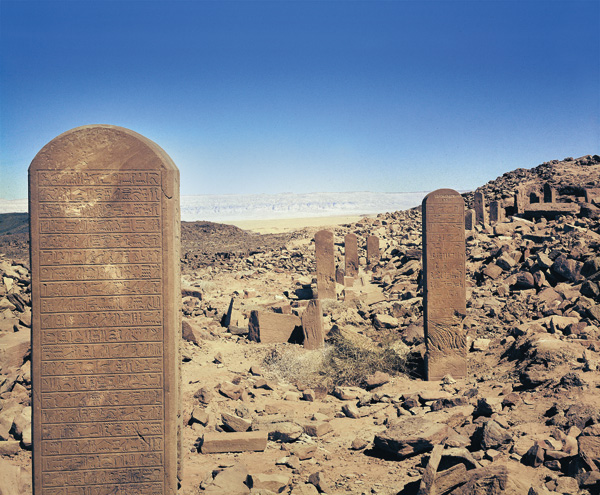Image Details

Erich Lessing
SITE OF THE REVOLUTION. Amid the desolate, windswept hills of southern Sinai stand the jumbled remains of Serabit el-Khadem. Trailing out from the ruins of the site’s temple of Hathor are stelae and stones inscribed with the names and prayers of countless officials, laborers and itinerant travelers who worked the rich turquoise mines during the Egyptian Middle Kingdom (c. 1950–1800 B.C.E.). While many of the messages were carved in arcane Egyptian hieroglyphs, others were inscribed in Canaanite using, for the first time, a simple but ingenious alphabetic script made up of only a few dozen hieroglyphic-inspired signs. This invention, developed by humble workmen in the turquoise mines of Sinai, would forever change human communication.
